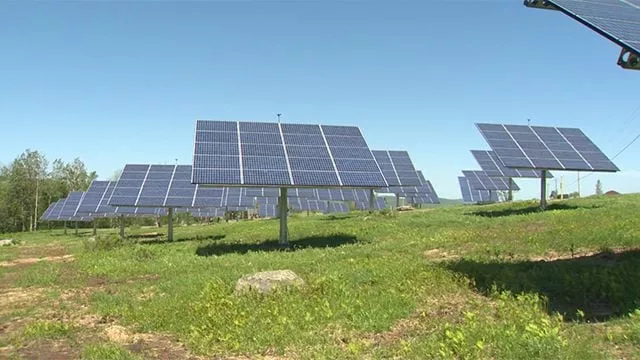MONTPELIER, Vt. (WCAX) – Vermont lawmakers are advancing a bill that seeks to expand the state’s renewable energy portfolio, but the governor and others are questioning at what cost to consumers.
Vermont utilities are already on track to source 75% of their power from renewable’s by 2032. But a bill heading to the Vermont House would supercharge that effort to 100% by 2030.
“We are in a pretty dynamic energy transition in this country and in Vermont,” said Rep. Laura Sibilia, I-Dover.
There’s been a big push nationally to electrify everything, from transportation to HVAC, and lawmakers say all of our energy should be sourced from renewables both in and out of state.
But some are concerned about the cost. The Department of Public Service held dozens of meetings over the past year and found Vermonters’ top priority was affordability. “More expensive power supply from new resources and then also from transmission and distribution costs associated with creating headroom on our grid to accommodate new renewable energy,” said the department’s T.J. Poor.
Those costs amplified this week when Governor Phil Scott took aim at the bill. He cited a Joint Fiscal Office report that found the bill would cost $1 billion over the next decade. “There’s nothing easier in politics than claiming we have to do something without articulating the tradeoff, because there’s always, always a tradeoff,” Scott said. The governor is pitching an alternative plan he says is cheaper.
“It’s disappointing but not unsurprising that the governor wants to do less in a longer period of time than the House and Senate. They want more action, more leadership out of Vermont to lead on climate change,” said Peter Sterling with Renewable Energy Vermont. He adds that sourcing power from fossil fuels is more expensive in the long run.
The region’s energy grid is complex, powered by a web of regulated utilities. There are large ones like Green Mountain Power as well as smaller ones like Vermont Electric Co-op, and municipal utilities. The Vermont Electric Power Company operates transmission lines and conducts long-term transmission planning, which is estimated to cost hundreds of millions. But Rep. Sibilia says that doesn’t tell the full picture. “I think they’re running that through a process and an analysis that is not taking into account a flexible renewable standard that we have negotiated with all of the utilities,” she said.
It’s too soon to tell what any final proposal would mean for Vermonters’ average electric bill. Lawmakers in the House are likely to vote on the bill when they return from their Town Meeting Day break.

